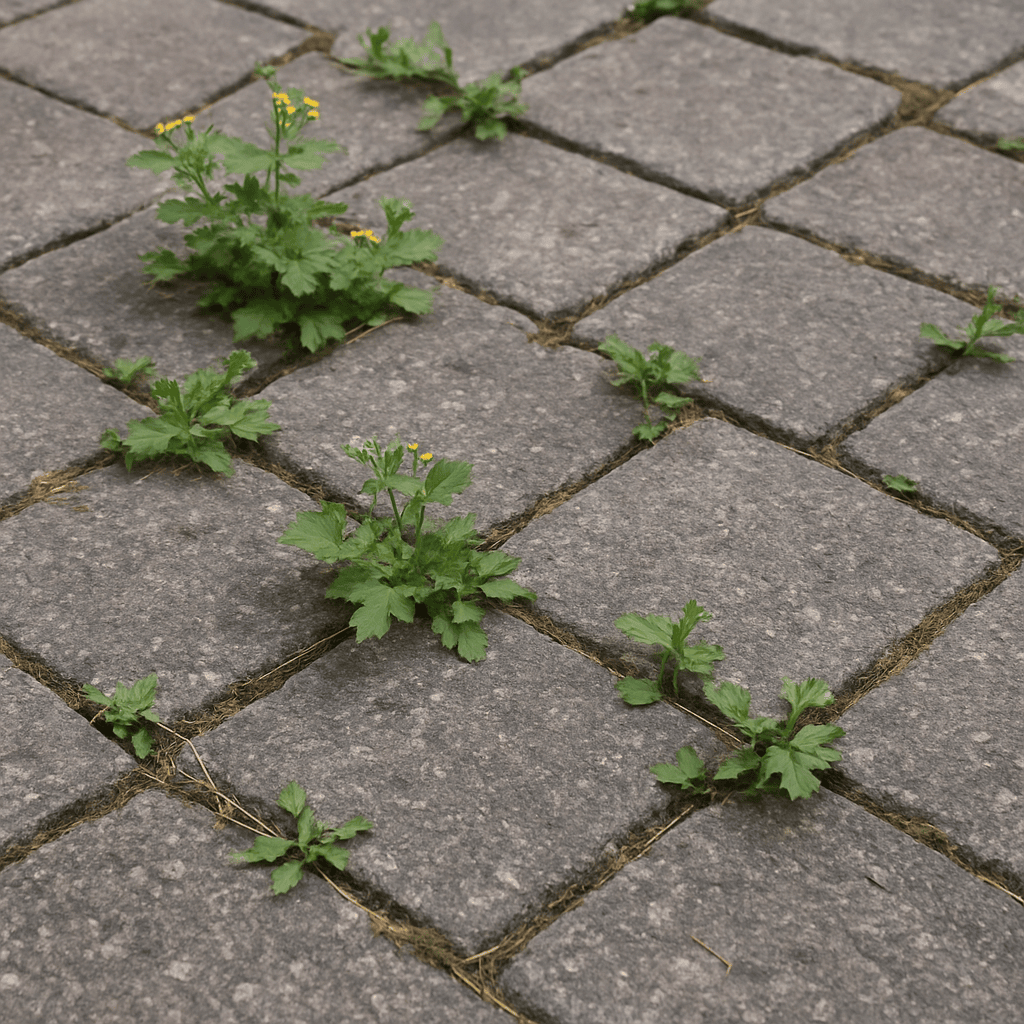

Uncontrolled vegetation, commonly known as weeds, has a significant impact on agriculture, infrastructure, and the environment. In crop cultivation, it can cause yield losses between 20% and 80%. In urban areas, it damages pavements and buildings, causes maintenance costs, and affects cleanliness. Sustainable weed control is therefore essential to protect economic efficiency, infrastructure, and ecosystems in the long term.
Weeds deprive crops of light, water, and nutrients – often combined with pests or diseases, resulting in yield losses of up to 80%.
Aggressive roots penetrate joints in paving, roads, and buildings, causing permanent damage that is expensive to repair.
Weeds spread extremely effectively via seeds, rhizomes, or runners – if left untreated, they can colonize entire areas in a short time.
High temperatures (from 60 °C) denature plant enzymes and cell structures. Values around 99 °C even penetrate root systems – a major advantage over chemical or mechanical methods.
With a thermal conductivity of 0.6–0.7 W/mK, water transfers heat 20–25 times more effectively than air or steam. This allows the thermal effect to penetrate deep into the soil – reaching the root system.
Hot water destroys not only the above-ground parts but also weakens root reserves. Multiple applications (3–4 per year) drain the plant’s energy, inhibit regrowth, and reduce maintenance needs in the long term.
| Medium | Thermal Conductivity (λ) | Penetration Depth | Effectiveness |
| Hot Air | ~0.03 W/mK | Above-ground only | Low on roots |
| Steam | ~0.025 W/mK | Limited | Moderate |
| Hot Water | 0.6 – 0.7 W/mK | Deep-reaching, reaches roots | High, sustainable |
Hot-water weed control combines ecological responsibility, technological efficiency, and economic sustainability. By thermally damaging even the roots, long-term results are achieved with minimal environmental and labor effort. As a chemical-free alternative, this method significantly contributes to the long-term health of ecosystems and infrastructure.
1. How many treatments are needed in the first year?
Three to four treatments are recommended to effectively weaken root reserves. In the following years, usually one annual treatment is sufficient.
2. Does hot water also damage useful plants?
Yes, it is generally phytotoxic. Therefore, treatments are applied selectively – for example, along paths or in joints, not on cultivated areas.
3. Is the method truly chemical-free?
Yes, it relies solely on thermal denaturation without any pesticides or herbicides – a clean solution.
4. Does it also work on gravel or asphalt?
Yes. Hot water penetrates joints and cracks, treating seeds and roots beneath – ideal for paved surfaces.
5. Why is hot water more effective than steam or hot air?
Water conducts heat 20 to 25 times more efficiently than air or steam. This allows it to reach the roots instead of treating only the surface.
6. Are there ecological disadvantages?
In the short term, microorganisms may be reduced by the heat. In the long term, however, the method is environmentally friendly because no chemicals are used.